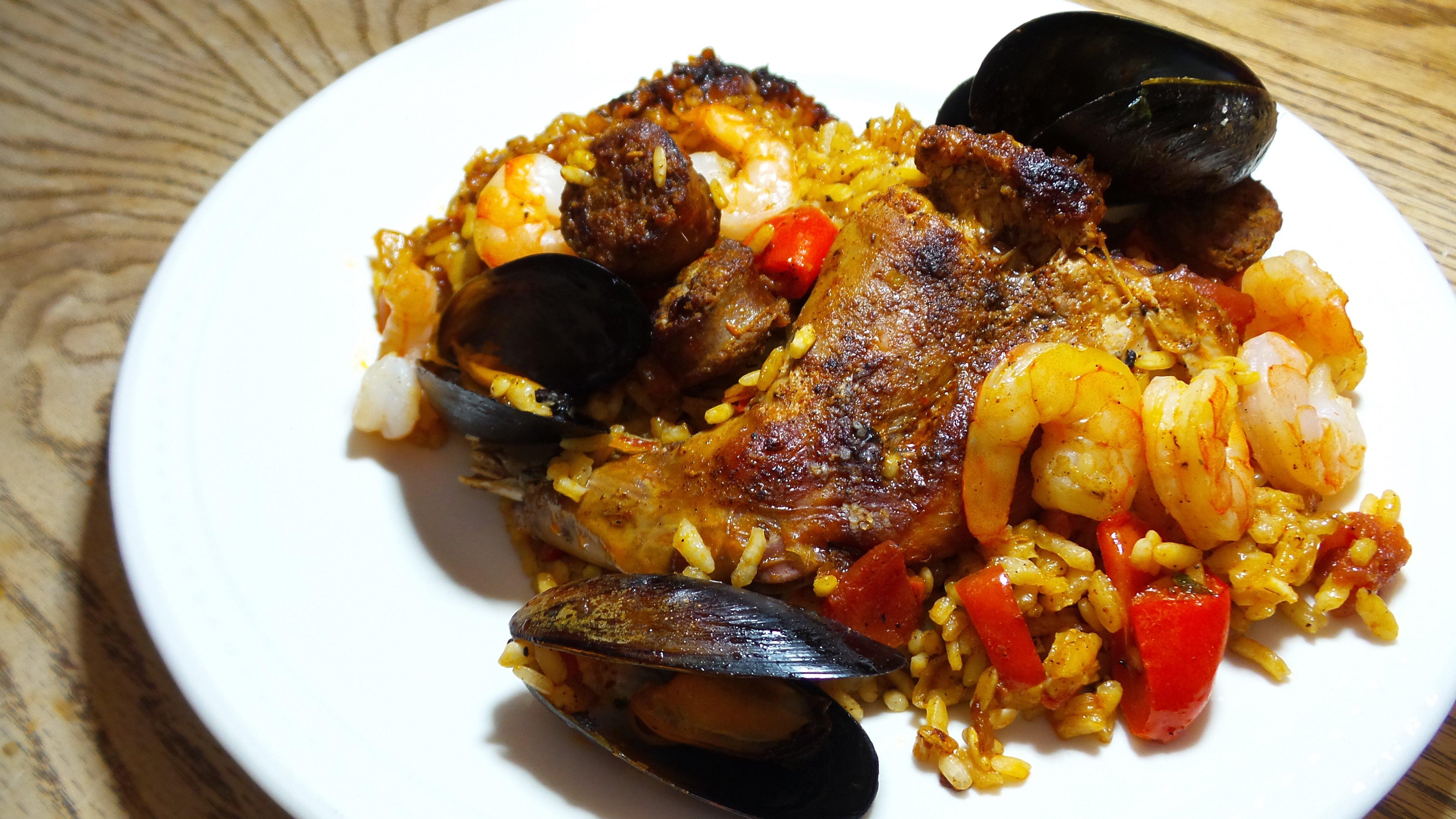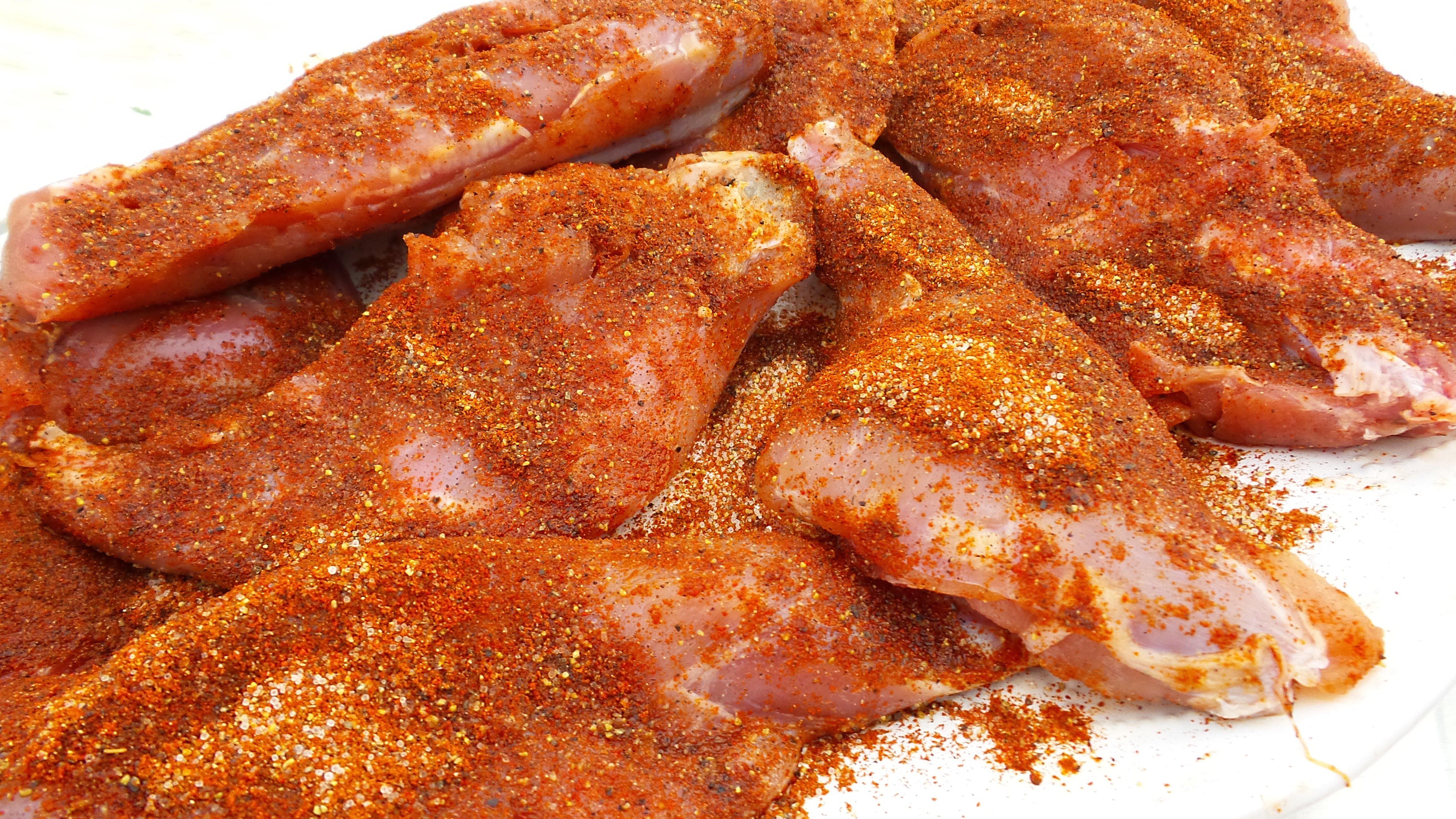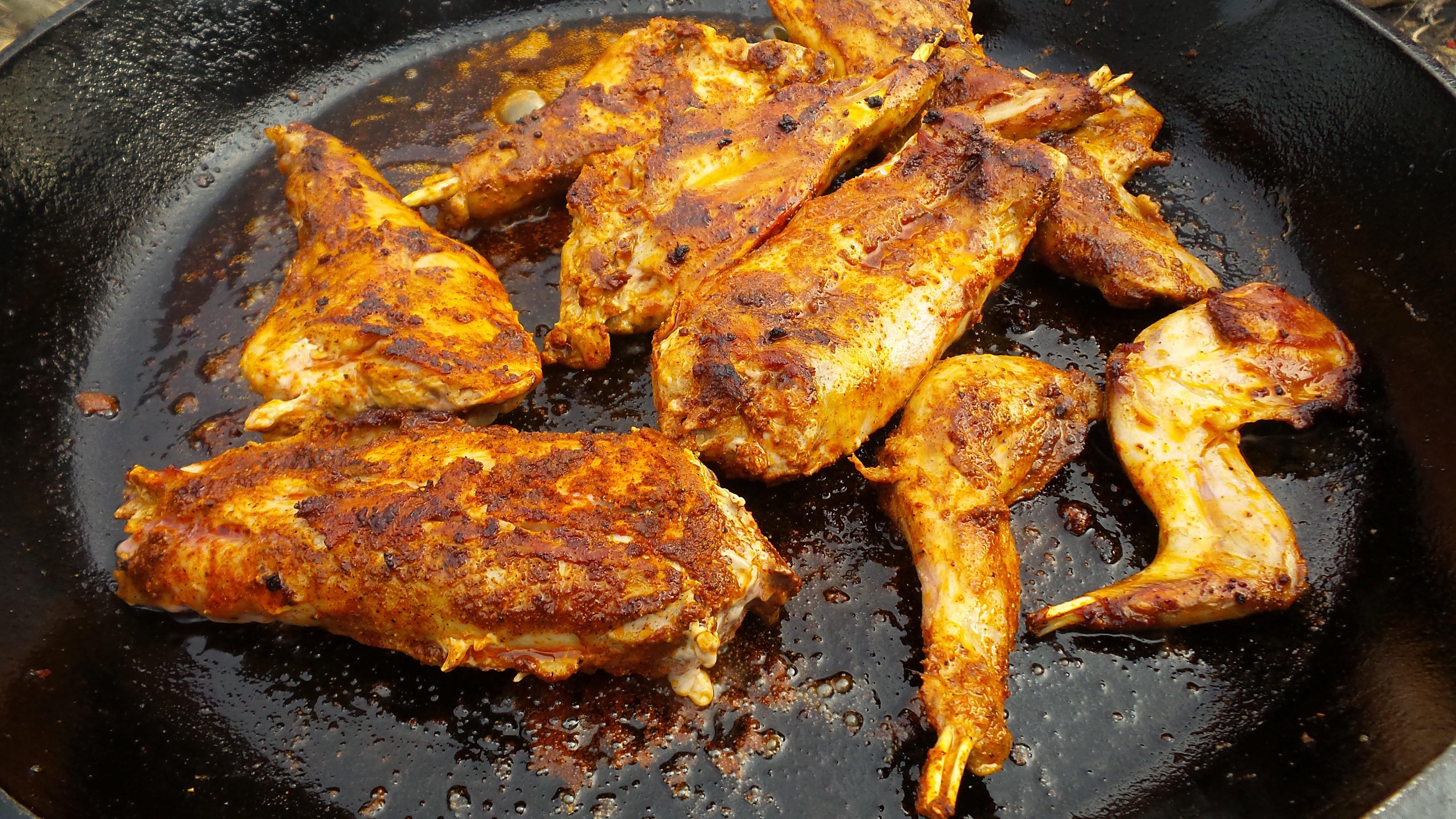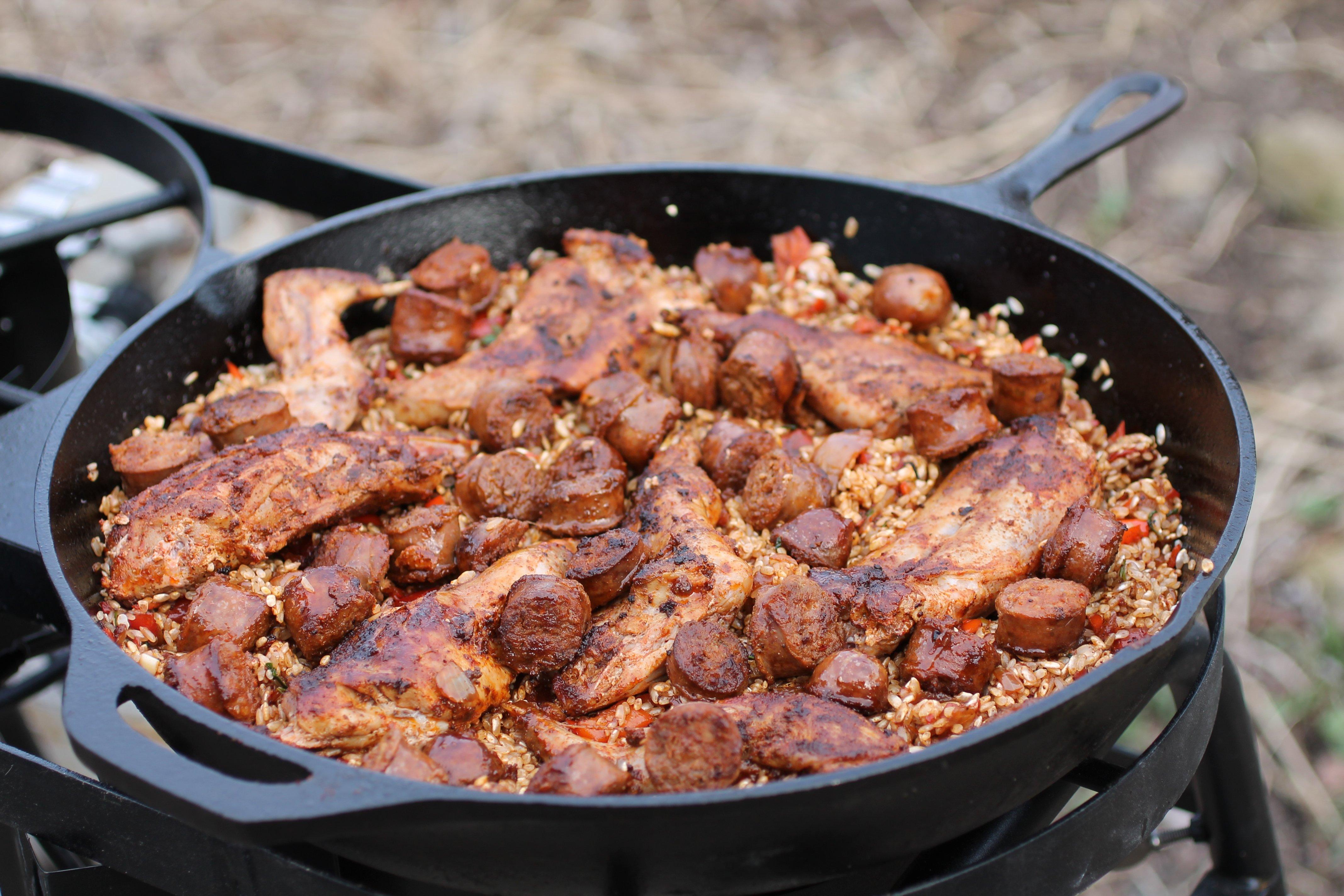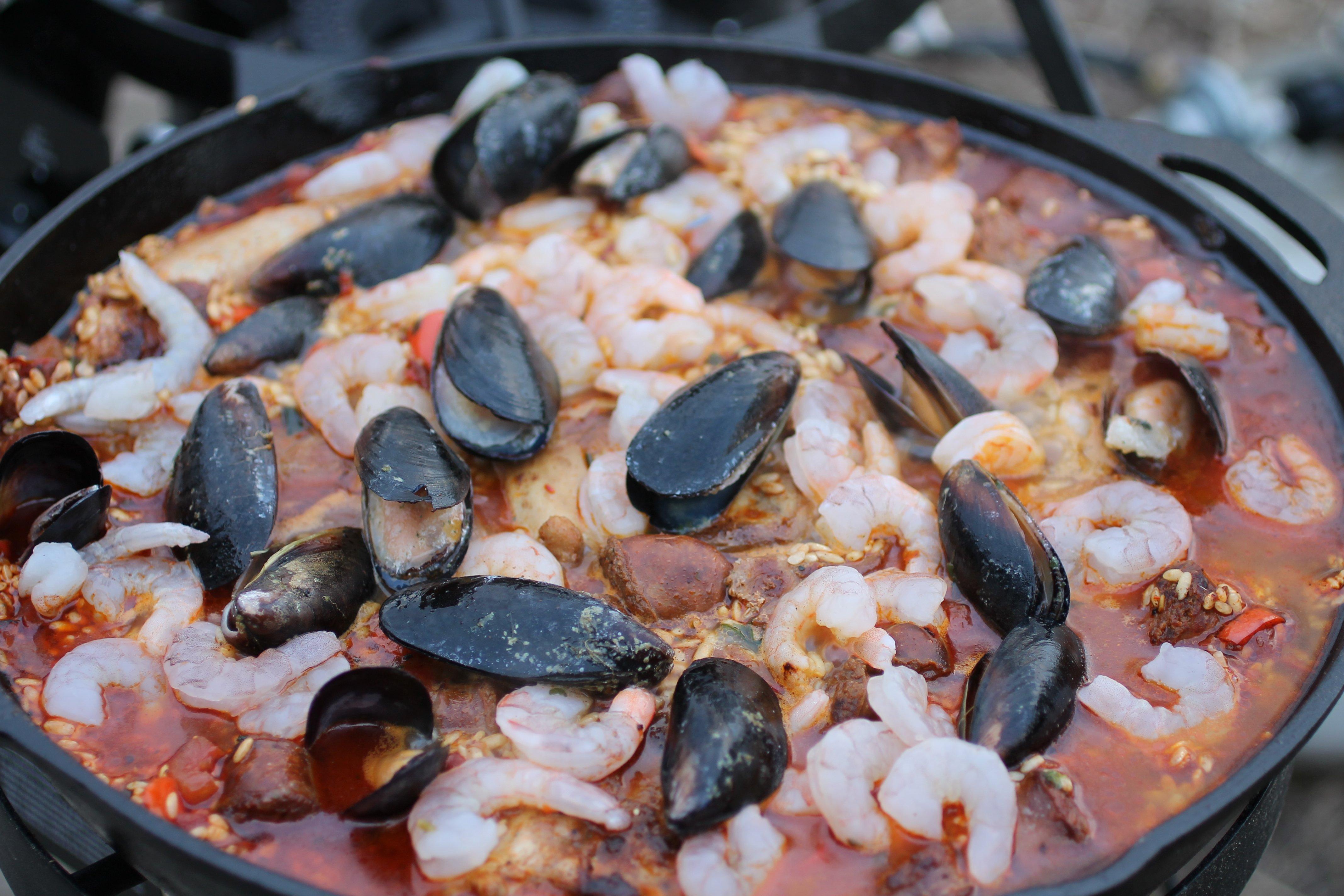Rabbit, Sausage and Seafood Paella
Rabbit, Sausage and Seafood Paella
60 Min
Prep Time
80 Min
Cook Time
5-7
Servings
Paella originated with agricultural workers along the east coast of Spain in the 18th century. Traditionally cooked in a single pan over an open fire, the dish consisted of rice, vegetables and whatever protein was readily available. One of those proteins was rabbit, and the early Spaniards quickly realized that it worked extremely well in the dish. Over the years, other meats have replaced the traditional rabbit in the dish, but paella is still one of my favorite ways to serve up a cottontail or two.
Since I don't have a traditional paella pan large enough for this recipe, I use the next best thing, a 15½-inch Lodge cast iron skillet. My favorite way to cook the dish is on an outdoor gas burner or campfire. The large size of the skillet allows the rice to spread out around the meat and to form a crunchy bottom layer next to the pan. For many paella lovers, this crispy part, known as the socarrat, is the absolute best part of the dish.
Regardless of the recipe used, one of the ingredients consistent in all paellas is the spice saffron. Yes, it is expensive enough to make you do a double-take, but just a pinch goes a long way and it keeps for years when tightly sealed in a jar. One of the best ways to infuse the saffron flavor throughout the dish is to drop a pinch into the chicken broth as it warms. Be sure to crumble the tiny strands between your fingers before you drop them in to get the strongest essence.
The traditional rice for paella is a short- to medium-grained Spanish rice known as bomba. Since bomba is sometimes hard to find in U.S. markets, medium-grain Arborio is an acceptable substitute. Long grain rice varieties don't absorb the liquid fast enough or reach the correct softness level for a true paella.
Try this one for the next family get together. See if it is as big a hit around your house as it is around ours.
Ingredients
2 cottontail rabbits, quartered
1 pound chorizo sausage, cut into one inch slices
1 pound wild caught American shrimp, peeled
Mussels or other seafood
3 cups Spanish bomba or Arborio rice
Two bell peppers, sliced
1 onion, diced
3 cloves garlic, sliced
1 14.5 ounce can of Hunt's Fire Roasted Tomatoes
8 cups of chicken stock, warm, but not boiling, infused with a pinch of saffron
½ cup flat leaf parsley, chopped
kosher salt
Seasoning rub for rabbit
Teaspoon Kosher salt
Tablespoon paprika
Teaspoon dried oregano
Teaspoon black pepper
Mix well in a cup or bowl
Cooking Instructions
Rub the rabbit with the seasoning blend and refrigerate for an hour or two.
Add the rabbit to the pan and brown for 6 to 8 minutes per side. Remove the rabbit and set aside.
Slowly pour in the rice, a bit at a time, stirring well as you go to coat each individual grain with flavor. Once all of the rice has been added, nestle the meat back into the pan.
For the first 10 minutes, stir the paella from time to time, adding more stock as it absorbs into the rice. After 10 minutes have passed, DO NOT STIR again. Don't worry about the rice sticking, it is supposed to, the stuck-on part forms the previously mentioned socaratt. Continue to cook for another 25 to 30 minutes, adding more stock as necessary to keep the rice covered. With 10 minutes left in the cooking process, add shrimp, mussels or other seafood to the pan. Check for seasoning and add another sprinkle of salt if needed.
Use this recipe as a base, but customize it to your family's taste. Like peas? Add in a cup of frozen green or snap peas with the vegetables. Enjoy shellfish? Add some mussels or clams when you add the shrimp. Out of rabbit? Chicken works, as does pheasant and grouse. Feeling adventurous? The early paellas almost always contained escargot. Squid or octopus works pretty well too. Experiment with different ingredients and make the dish your own.



